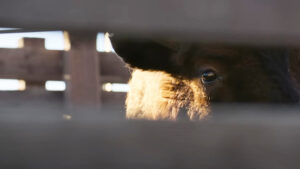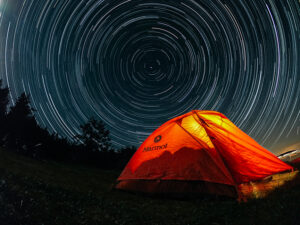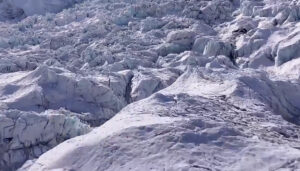Everest had a starring role in Shanghai International Film Festival recently and not because of recent parallels with that city’s traffic jams. Blockbuster action hero Wu Jing and other members of the cast introduced The Climbers, an upcoming film about how the “other” side of Everest was conquered.
Wu told journalists about the shoot in Qinghai province, where he personally experienced the effects of high altitude. As he explained, he had done some climbing but had never reached 6,000m before. A bad cold and mild case of altitude sickness turned out to be just exactly what he needed to get into the role.
The cast also includes Zhang Yimou, a director known in the West for such art house films as Raise the Red Lantern and To Live, and Zhang Ziyi, best known as the young martial artist in Crouching Tiger, Hidden Dragon. Even superstar Jackie Chan makes a cameo in the film. No wonder it’s creating a buzz. It premieres on the best possible date in China: September 30, the day before National Day and the start of Golden Week, the country’s longest holiday.
For a climbing audience, its trailer below, heavy on avalanche footage and flying leaps with ice axes, suggests something less than pure realism.
Given the potential for over-the-top melodrama, it will be interesting to see how the real, historical expedition is dealt with, since the 1960 climb by Wang Fuzhou, Konbu and Qu Yinhua is far less known than the Hillary-Tenzing story.
While the pioneering adventures on the North Side of Everest are invariably associated — at least in Western climbing literature — with British explorers like Mallory and Irvine, the first expedition to set foot on the top of Everest from the North Side was Chinese.
By that time, the world had broken into two main spheres of influence. Mao Zedong ruled China, the Cultural Revolution was just around the corner, and the expedition was led not by a climber but by war hero Hang Fudong. Members trained in the Soviet Union before heading to Everest. While only four climbers summited, the overall expedition counted up to 214 members, of which an incredible 192 reached Base Camp in March of that year.

Chinese summiters back in Base Camp. Photo from the 1965 book, Climbing in China
It will be interesting to see whether the script addresses the lack of photographic summit proof, although apparently it does mention that the climbers left a plaster statue of Mao on the summit. Its lightness may explain why the next men on top, American Jim Whittaker and Nawang Gombu Sherpa, found no trace of it three years later.
In fact, the most lasting sign of the Chinese expedition was the nearly 400km road built from Shigatse to Base Camp to convey those 200 people and their gear. Nevertheless, the worldwide climbing community generally accepts their feat because of their accurate descriptions of the geographical features above the Third Step and the summit.
According to the crew’s comments in Shanghai, the film focuses on the final push, including the human ladder they formed on the Second Step, how the climbers ran out of supplementary oxygen just 50 metres below the summit, and their epic descent, when the three summiters rescued a fourth member, Liu Lien-man, who had collapsed, exhausted, under the Second Step.
Whether the film is closer to classics like Into the Void and Free Solo, or howlers like Vertical Limit and Cliffhanger, the story of this obscure but important expedition is worth a night at the movies.
You can read more about the 1960 Chinese climb in this excellent blog post.






